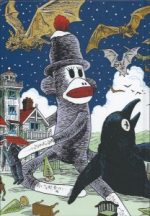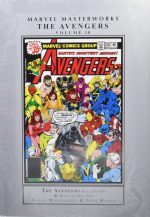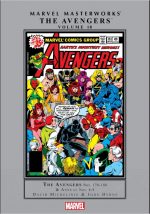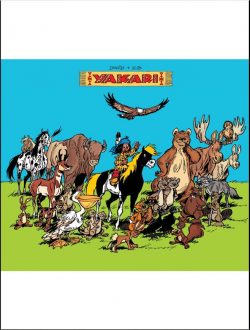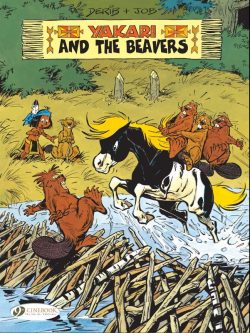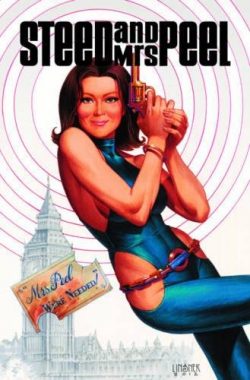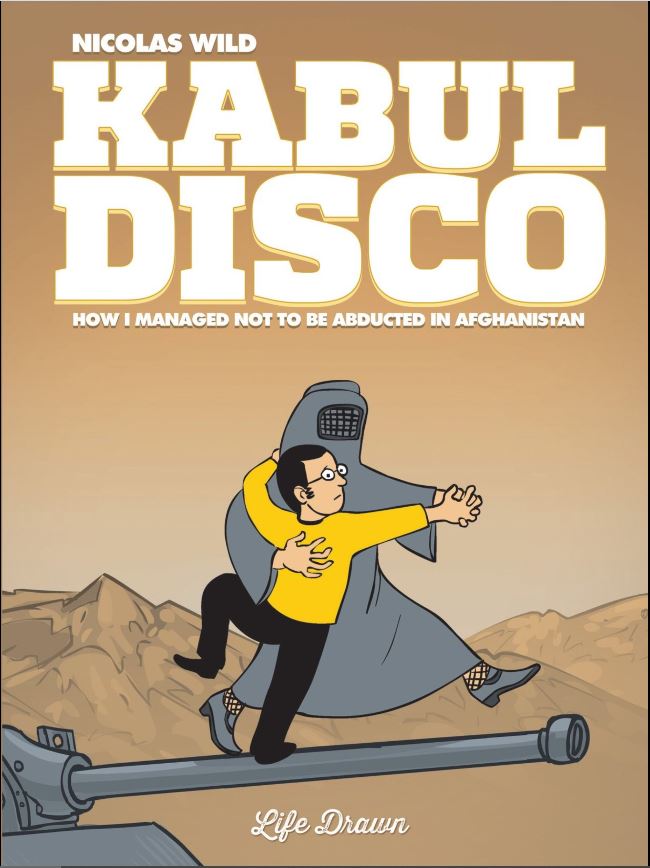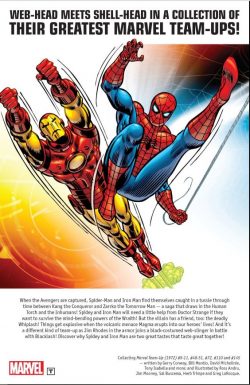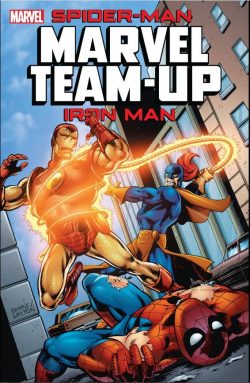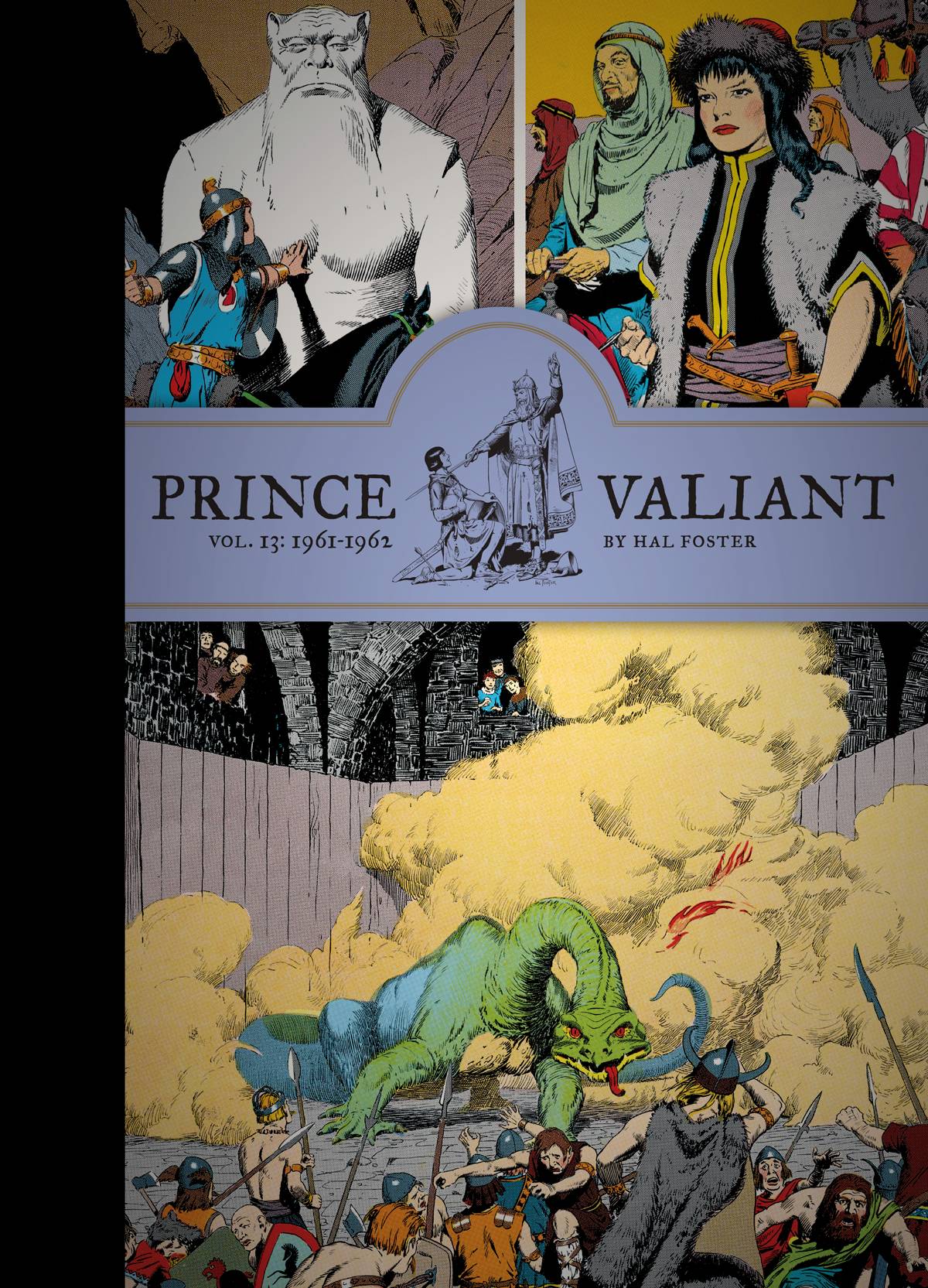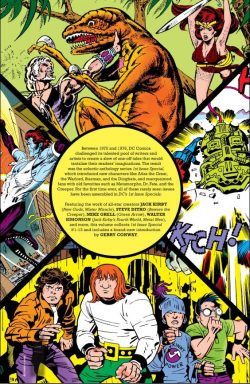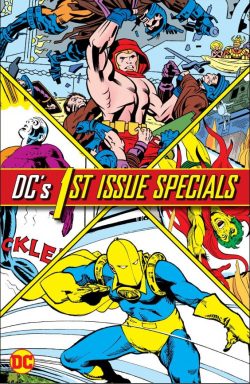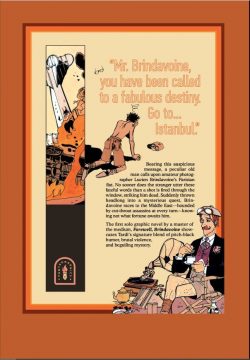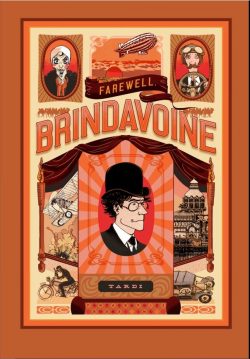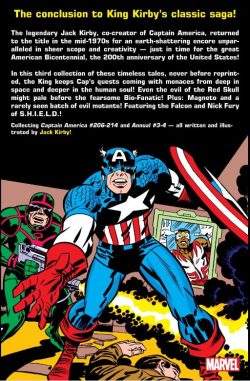
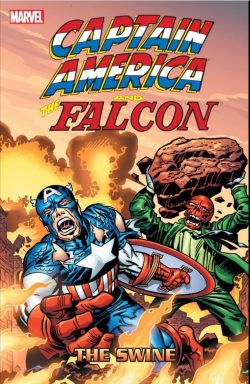
By Jack Kirby, with Frank Giacoia, Mike Royer, Dan Green, John Verpoorten, John Tartaglione & various (Marvel)
ISBN: 978-0-7851-2078-0 (TPB)
These days Captain America is as much a global symbol of the Land of the Free and the Home of the Brave as Uncle Sam or Apple Pie ever were. Add to that this year is his 80th anniversary and you have all the excuses you need to revisit some classics comics…
Created by Joe Simon & Jack Kirby in an era of frantic patriotic fervour, Captain America was a dynamic and highly visible response to the horrors of Nazism and the threat of Liberty’s loss. However, the concept quickly lost focus and popularity after hostilities ceased. Fading away during post-war reconstruction only to briefly reappear after the Korean War: a harder, darker sentinel ferreting out monsters, subversives and the “commies†who lurked under every American bed.
Then he vanished once more until the burgeoning Marvel Age resurrected him just in time to experience the Land of the Free’s most turbulent and culturally divisive era.
He quickly became a mainstay of the Marvel Revolution during the Swinging Sixties, but lost his way somewhat after that, except for a glittering period under scripter Steve Englehart. Eventually, however, he too moved on and out in the middle of the 1970s.
Meanwhile, after nearly a decade drafting almost all of Marvel’s successes, Jack Kirby had jumped ship to arch-rival DC in 1971, creating a whole new mythology and dynamically inspiring pantheon. Eventually he accepted that even he could never win against any publishing company’s excessive pressure to produce whilst enduring micro-managing editorial interference.
Well aware of which way the winds were blowing and bolstered by a signed promise of editorial free rein, Kirby exploded back into the Marvel Universe in 1976 with another stunning wave of iconic creations. These included Machine Man, The Eternals and Devil Dinosaur plus media adaptations 2001: A Space Odyssey, and – so nearly – seminal TV paranoia-fest The Prisoner. The King’s return was capped by a regular gig crafting a veritable blizzard of bombastic covers for almost every title in the company, bestowing the Kirby magic on old stalwarts like Thor, Iron Man and the FF, and fresh stars like Skull the Slayer and Nova.
Crucially, Kirby was also granted absolute control of two of his most iconic co-creations: firmly established characters Black Panther and Captain America – to do with as he wished…
His return was much hyped at the time but swiftly became controversial since his intensely personal visions paid little lip service to company continuity: Jack always went his own bombastic way. Whilst those new works quickly found many friends, his tenure on those earlier inventions drastically divided the fan base.
Kirby was never slavishly wedded to tight continuity and preferred, in many ways, to treat his stints on Cap and the Panther as creative “Day Onesâ€. This was never more apparent than in the pages of the Star-Spangled Sentinel of Liberty…
This collection – available in trade paperback and relatively carbon neutral digital formats – reprints Captain America and the Falcon #206-214 plus the third and fourth Captain America Annuals, cumulatively spanning January 1976 to October 1977.
Previously, the original Fighting American had saved the nation from a conclave of aristocratic oligarchs attempting to undo two hundred years of freedom and progress with a debilitating “Madbombâ€, before rescuing a lost tribe of lunatics trapped in extra-dimensional space and repelling an invasion by a manic refugee from the future. Now it was time for a radical change of pace and emotional impact…
Inked by Frank Giacoia, Kirby sets a tone of malevolent moodiness and uncanny mystery as the freedom-loving warrior comes ‘Face to Face with the Swine!’ which sees the Star-Spangled Sensation illegally renditioned by secret police to deepest Central America. Here he endures torture and terror to topple the private kingdom and cruel personal playground of psychotic sadist Comandante Hector Santiago, unchallenged monarch of the prison of Rio del Muerte…
Never one to go anywhere meekly, Cap soon escapes and engineers the tormentor’s downfall in ‘The Tiger and the Swine!!’, but soon finds the surrounding jungles conceal actual monsters. When they exact primal justice on the petty tyrant and his gang of willing bullies, Cap’s escape with the Swine’s cousin Donna Maria down ‘The River of Death!’ is soon interrupted by the advent of another astounding Kirby Kreation… ‘Arnim Zola… the Bio-Fanatic!!’
The former Nazi geneticist is absolute master of radical biological manipulation: abducting Cap and Donna Maria to his living castle. Even as the Falcon is closing in on his long-missing pal, Zola inflicts upon them a horde of diabolical homunculi: all done at the behest of a mysterious sponsor…
Indomitable against every kind of shapeshifting horror, Captain America battles on, enduring a terrible ‘Showdown Day!’ (Mike W. Royer inking) whilst back home, Rogers’ beloved Sharon Carter uses her resources as SHIELD Agent 13 to investigate wealthy Cyrus Fenton: subsequently exposing ‘Nazi “Xâ€!’ as Zola’s patron and the Sentinel of Liberty’s greatest nemesis…
With his tenure on the title inexorably counting down, Kirby ramped up the tension for #212 as ‘The Face of a Hero! Yours!!’ sees Zola preparing to surgically insert the personality of the Red Skull into Cap’s form, triggering a cataclysmic clash leaving our hero bloodied and blind, but ultimately victorious…
With Cap recuperating in a US hospital, Dan Green steps in to ink #213 as ultimate assassin ‘The Night Flyer!’ targets the impaired warrior on the orders of unfettered capitalist despot Kligger (agent of the ubiquitous, insidious Corporation). With Royer inking, the shocking clash inadvertently restores the far-from-helpless victim’s vision in time for spectacular – if abrupt – conclusion in #214’s ‘The Power’…
Filling out this King-Sized Kompilation are a brace of out-of-continuity yarns originally gracing the Annuals for 1976 and 1977, with the Star-Spangled Avenger revelling in the business basics of super-heroism.
With inks from Giacoia and John Verpoorten, Captain America Annual #3 offers a feature-length science fiction shocker eschewing convoluted back-story and cultural soul searching by simply pitting the valiant old soldier against a cosmic vampire: ‘The Thing from the Black Hole Star!’. This is a rollercoaster riot of rampaging action and end-of-the-world wonderment featuring a fallible but fiercely determined fighting man free of doubt determined to defend humanity at all costs…
Captain America Annual #4 (inked by Verpoorten ana John Tartaglione) then brings the fury and furore to a close with‘The Great Mutant Massacre!’: a feature-length super-shocker pitting America’s Super Soldier against humanity’s nemesis Magneto and his utilitarian recruits Burner, Smasher, Lifter, Shocker, Slither and Peeper: a Homo Superior hit-squad aiming to take possession of a potential mutant being whose origins are far stranger than anybody could conceive…
This tome concludes with biographical secrets and career background courtesy of fact-packed prose essay Marvel Spotlight: Jack Kirby – Official Handbook and Matt Adler’s historical appreciation of the early days of Marvel in Simon, Kirby and Captain America.
King Kirby’s commitment to wholesome adventure, breakneck action and breathless wonderment, combined with his absolute mastery of the comic page and unceasing quest for the Next Big Thrill, always make for a captivating read. These late adventures are cruelly overlooked romps as good as anything Jack crafted over his decades of creative brilliance: fast-paced, action-packed, totally engrossing Fights ‘n’ Tights masterpieces no fan should ignore and, above all else, fabulously fun tales of a true American Dream…
© 2020 MARVEL.


